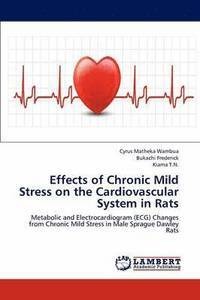
Liknande böcker
Cardiovascular Changes and Unconjugated Hyperbilirubinemia in Neonates : An insight on the echocardiographic findings in jaundiced neonates
Bok av Tosson Angie M S
Neonatal hyperbilirubinemia is extremely common, because almost every newborn develops an unconjugated serum bilirubin level more than 30mol/l (1.8 mg/dl) during the first week of life. Incidence figures are difficult to compare. Hyperbilirubinemia may be conjugated or unconjugated. Hyperbilirubinemia may require therapy, which is mainly in the form of phototherapy or exchange transfusion. Unconjugated hyperbilirubinemia may result in severe medical conditions when left untreated. The most serious of them is encephalopathy. Cardiac affection due to unconjugated hyperbilirubinemia was reported. Left ventricle (LV) systolic dysfunction was detected in full-term neonates with unconjugated hyperbilirubinemia. In this book, the effects of unconjugated hyperbilirubinemia on the cardiovascular status and myocardial function in jaundiced neonates were documented. We studied the impact of different clinical parameters (e.g. mode of delivery,gestational age,admission weight, etc.)and laboratory parameters (e.g. level of total and unconjugated bilirubin on admission and after 48 hours, hemoglobin, etc.) on the cardiac functions measured by echocardiography.







